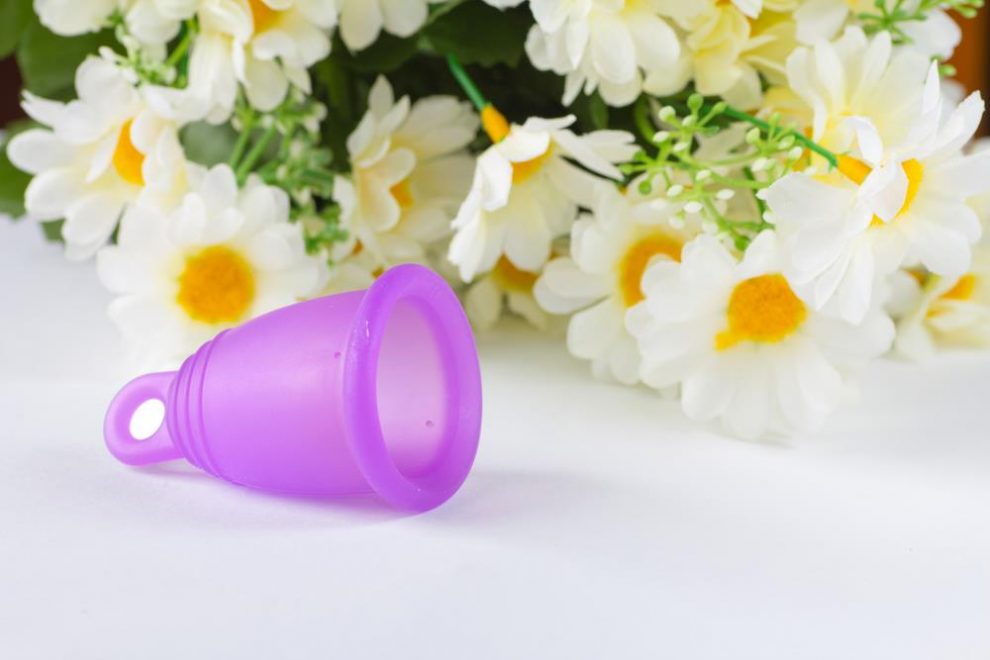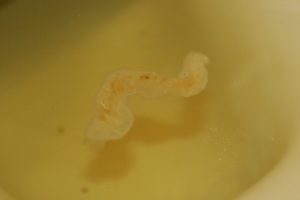A menstrual cup is an instrument used by females to maintain hygiene during menstruation as it traps then menstrual discharge. It is made up of silicone and is usually bell shaped with enough flexibility. Females wear it inside the vagina as soon as the menstruation starts; depending upon the amount of menstrual discharged it is taken off and cleaned into toilet.
Contents
What is a Menstrual Cup?
Menstrual cup is a small cup which is used to collect the menstrual flow and is inserted just under the cervix tightly into the vagina.
The best thing about cup is that it can be washed and reused. When the menstruation period ends, the cup can be sterilized by heating it to a high temperature along with boiling water and can be placed safely to be used in the next cycle. The menstrual cup is different from other materials which are used in menstruation, for example tampons and sanitary pads as these both absorb the menstrual discharge while cup is to collect the discharge. Depending on the quality of cup, it can be used for as long as 4-5 years if hygiene instructions are seriously followed. Since these cups are cheaper and eco-friendly the companies which are manufacturing these menstrual cups claim it to be a best alternative to sanitary pads or tampons.
What is a Menstrual Cup and What are the Types of Menstrual Cups Available in the Market?
As we discussed earlier, the menstrual cup is made up of medical grade silicon and is bell shaped. The material used to make these cups are sometimes latex (rubber) or TPE (The thermoplastic elastometer). The good quality cups are designed and meant to be used for almost a decade but a great deal of care is needed while using such products, there are some manufacturers who recommend the annual replacement of such products to ensure more hygiene and safety. It is also to be kept in mind that before sexual intercourse, the cup is supposed to be removed.
Availability of menstrual cups (Size and material):
The size of menstrual cup is variable, for the females under 30 or those who have not undergone normal birth methods can use smaller size cups while the females over 30 years with a history of giving natural birth may need larger sized cups. This is due to the fact that after giving natural birth, there is heavier bleeding and hence cup of larger size is needed. However, if teenagers or virgins are considering using the menstrual cups, they need cups with smallest diameter. One may also chose the cup depending on the capacity as heavily menstruating females need a cup which has more capacity to collect the flow.
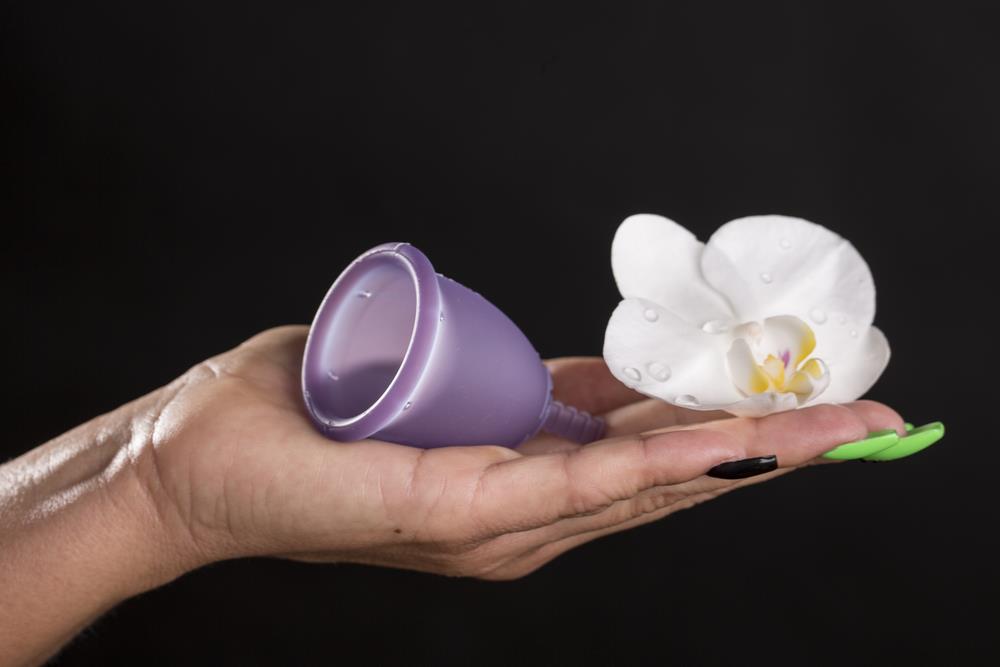
How Does a Menstrual Cup Work?
For the efficient functioning the cup must have high degree of flexibility. Flexibility is one of the key factors while selecting a menstrual cup. There is a great variation in the firmness degree of the cups. Softer cups are sometimes considered more comfortable while there is a group of females who feel more secured with firmer cups as firm cups can greatly prevent leaks by holding strong deal against the walls of vagina.
Menstrual cups are produced in several colors while some are colorless. The females making use of colorless cups may need to have some additional care as the menstrual flow can produce stains, hence at times, the colorless cups needs to be bleached or kept in strong sunlight for several hours to get rid of strains.
How to Use the Menstrual Cup?
The cup needs to be pinched or folded before placing it inside the vagina. The cup unfolds itself automatically and in this way a seal is created against the vaginal walls. To ensure the proper opening of the cup, user sometimes may need to twist or flex it. Once placed properly, the cup will make its way up and sit comfortably against the cervix. As with the tampons, these cups if placed properly will not cause any leaks. Hence it is particularly important for a woman to learn the proper installation of the cup before using it. Some females also need lubrication while inserting these cups. If at all, lubrication is needed make it sure that lubricant must be water based as other chemicals can damage the cup. How to use menstrual cup? It is simple once you learn to insert it properly; also you can follow the instructions or online tutorials for the right insertion of these menstrual cups.
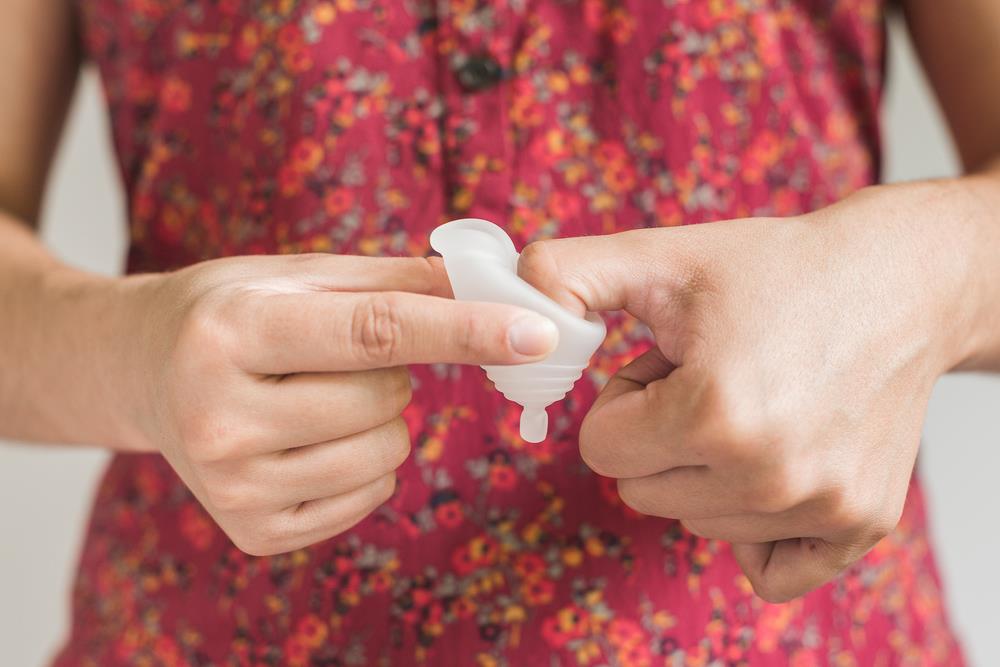
How Does a Menstrual Cup Work?
Since we have already discussed what is a menstrual cup? The menstrual cup works simply as a jar which creates suction between vaginal walls and gathers the menstrual discharge, depending on the capacity, once the cup is almost full, the collected material is discarded and cup is cleaned to be reused again.
How to Remove the Menstrual Cup?
Depending on the amount of menstrual discharge, the cup is needed to be removed and the content is to be dumped into the toilet after every 4-12 hours. The base of the cup is pinched; it helps to release the seal and makes it easier for the cup to be removed. Simple pulling of the cup’s stem might cause suction and therefore it must be avoided. Once the content of the cp is dumped, it must be washed before inserting it back. You can also use boiling water or any disinfectant (mild type). The manufacturing companies will also provide you essential guidelines to keep the cup clean, it is very important for you to follow these instructions carefully.
Menstrual cups are also available in disposable forms; such cups are to be discarded. The new cups are to be used every time in this case.
What is a Menstrual Cup and is it Safe to Use Menstrual Cup?
A cup which is used to collect the menstrual flow is called a menstrual cup. If you are following the hygiene instructions as given by the manufacturers, the menstrual cups are safe to be used and there is no such health risks associated. On the other hand, if the cups lack hygiene they can be disastrous to health.
What makes a better choice tampons over menstrual cups?
Menstrual cups can be used for longer time as compared to tampons, as tampons can be used for not more than 4-8 hours while cups can be used for as long as 12 days depending on the amount of menstrual discharge. Likewise, menstrual cup can hold more and generally odorless. According to some experts, menstrual cups are safer than tampons as they do not cause bacterial infection, chafing or rash. Many of the females still
What are advantages and disadvantages of using menstrual cups?
There are a lot of advantages and disadvantages which are related to menstrual cup utilization.
Advantages of using menstrual cups include:
• They are odorless as they form an airtight seal while using pads or tampons, there is always bad odor associated with menstruating females.
• Menstrual cup can hold more discharge and there is no chance of any leakage while a great care is needed while using sanitary pads or tampons.
• Soft menstrual cups are especially designed keeping in mind their utilization during sex. It won’t be irritable to the partner and there is no risk of blood to make the partner worry.
• Cups can be used for longer period of time even in heavy menstrual flow as compared to pads or tampons.
Disadvantages of using menstrual cups:
Along with advantages there are some side effects associated with the use of menstrual cups. These include:
• A lot of hygiene care is needed or else it can cause irritation.
• To find the accurate fit of a cup is always tough, although there is huge variation in the size of cups according to requirements but it is even challenging to find the one which fits well.
• The removal of menstrual cup can turn embarrassing sometimes and at the same time it is messy too. You need to pinch the base of the cup to release the seal very carefully.
• For the females using intra-uterine devices (IUD) as contraceptive methods, the use of such cups are strictly forbidden, there is always a risk of pulling on the string and dislodging the IUD which in turn becomes unsafe to be used for contraception.
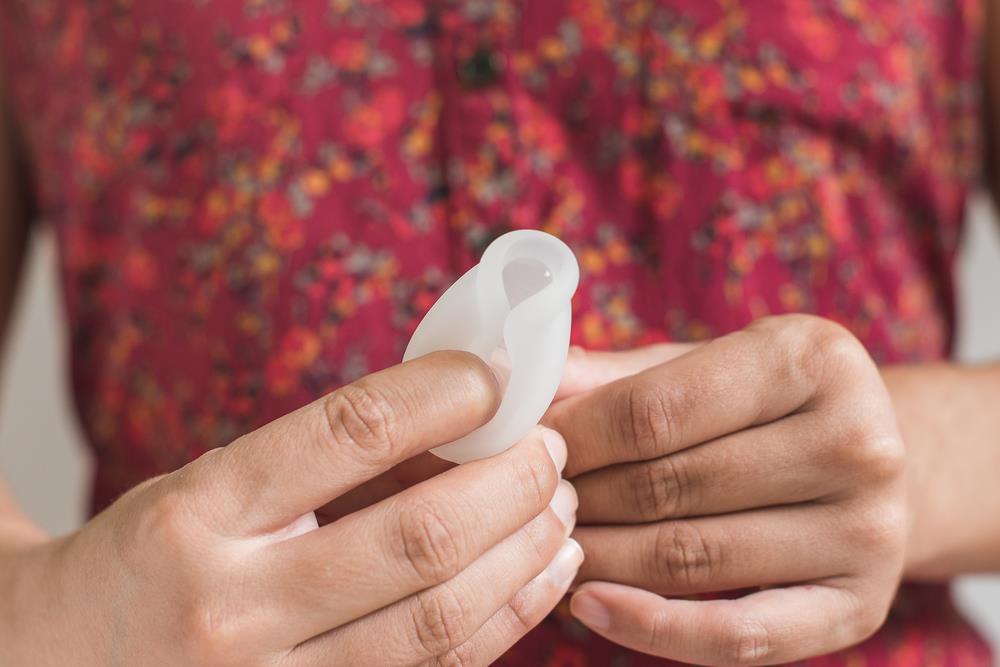
What are the Convenience Aspects of Menstrual Cup ?
Since we have discussed already about how does a menstrual cup work? One of the greatest things which are related to the use of menstrual cup is that women who are suspecting for heavy menstrual flow can keep a count of menstrual flow as some of the cups have certain marks which allow easy measurements. There is also a feedback from females that the use of cups has caused less cramping during menstrual period.
Can the Use of Menstrual Cup Cause Toxic Shock Syndrome?
Toxic shock syndrome is a deadly disease which is caused by bacteria. It has been established via certain investigations that there is a strong relation between the use of tampons and this disease. Although scientists have still not succeeded to demonstrate the exact cause, but there is no such evidence that goes with the use of menstrual cup and TSS. How does a menstrual cup work? As we discussed above that menstrual cups are not meant to absorb the discharge and hence they will not cause vaginal irritation and there is also no significant change in vaginal flora as well. Hence it can be safely said that, menstrual cups do not cause TSS.
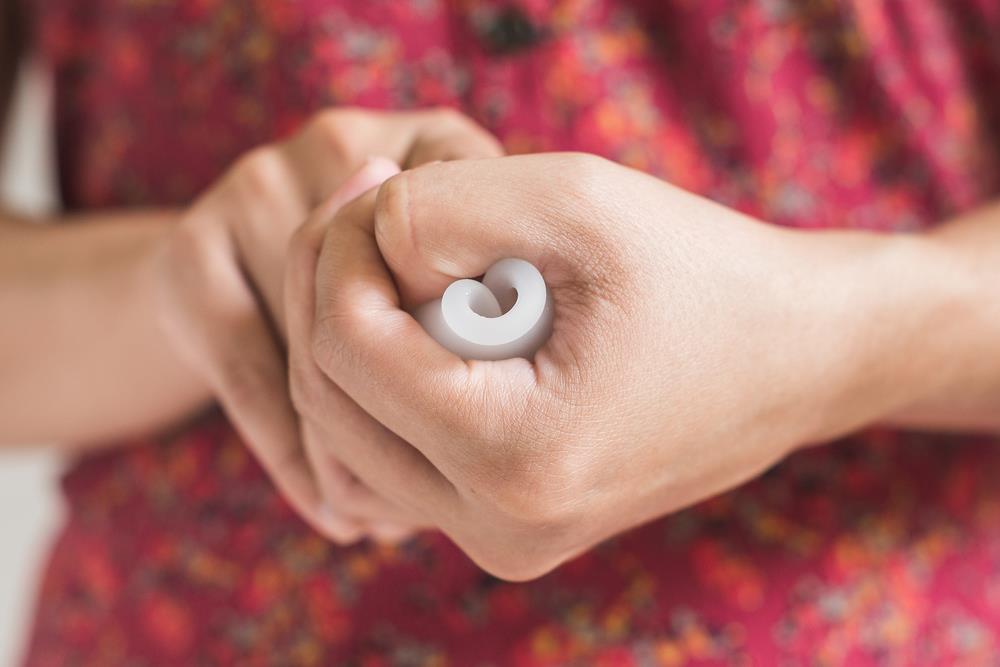
Are Menstrual Cups Economical ?
Yes, menstrual cups are economical mostly, especially the ones which can be reused after being sterilized. However, the disposable cups are little bit costly but the cost is still less than tampons and sanitary pads. There are some menstrual cups which (if taken care) can be used for as long as ten years. Hence the use of such cups is always economical.
Are menstrual cups eco-friendly?
Menstrual cups are reusable and hence they help in the reduction of wastes. On the other hand, the sanitary pads and tampons may need two or more decades for complete biodegradation. The silicon made menstrual cups are easily biodegradable and hence they are eco friendly as well.
How Can I Clean My Menstrual Cup?
The menstrual cups are easy to be cleaned; also you may need to empty them after 8-12 hours (depending greatly on the discharge). The methods of cleaning the cup are simple and all you need is few minutes to ensure the hygiene.
• Discard the content of the cup carefully in the sink or toilet, wash the cup with mild soap of disinfectant, you can also use soft brush or wipes to clean out the residue if any.
• For sterilizing, you can boil the cup in water for three to five minutes. Do not heat the cup for more than 5 minutes.
• Keep it in a clean place for use in the next menstrual period.
Can Someone with Latex Allergy or Sensitivity use Menstrual Cup?
Few cups are made up of latex while in majority of cases; the menstrual cups are made up of medical grade silicon. So make it sure to check the composition of menstrual cup if you have latex allergy, go for silicon made menstrual cup.
Is silicon bad for health?
Silicon is a simple material, the cup made up of silicon is extremely soft in texture, the material is same which is used in the replacement of internal valves of heart during cardiac surgeries and the insertion of certain tubing in the body, the silicon material use in the body is not supposed to leak or release its molecules in the body and hence you can use the material without any worry.
How to Keep the Menstrual Cup in Position?
It is pliable and especially designed to fit tightly with the vaginal walls. How does a menstrual cup work? When the cup is inserted under the cervix, the soft as well as flexible tissues of vagina hold it strongly in the position. So you can walk and play without any risk of leakage once the cup is inserted properly.
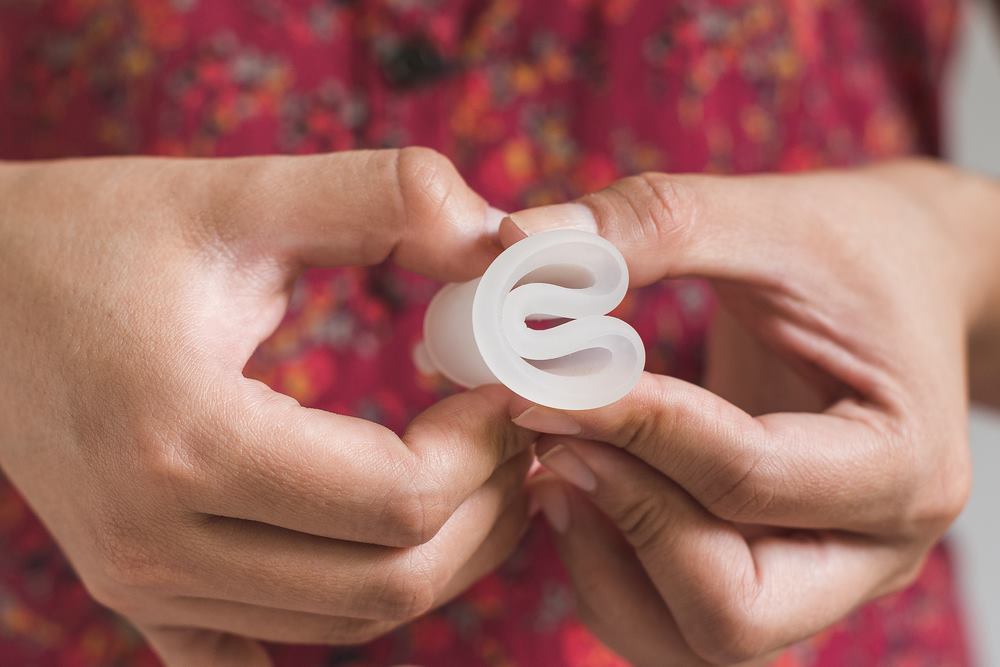
Related Post :







